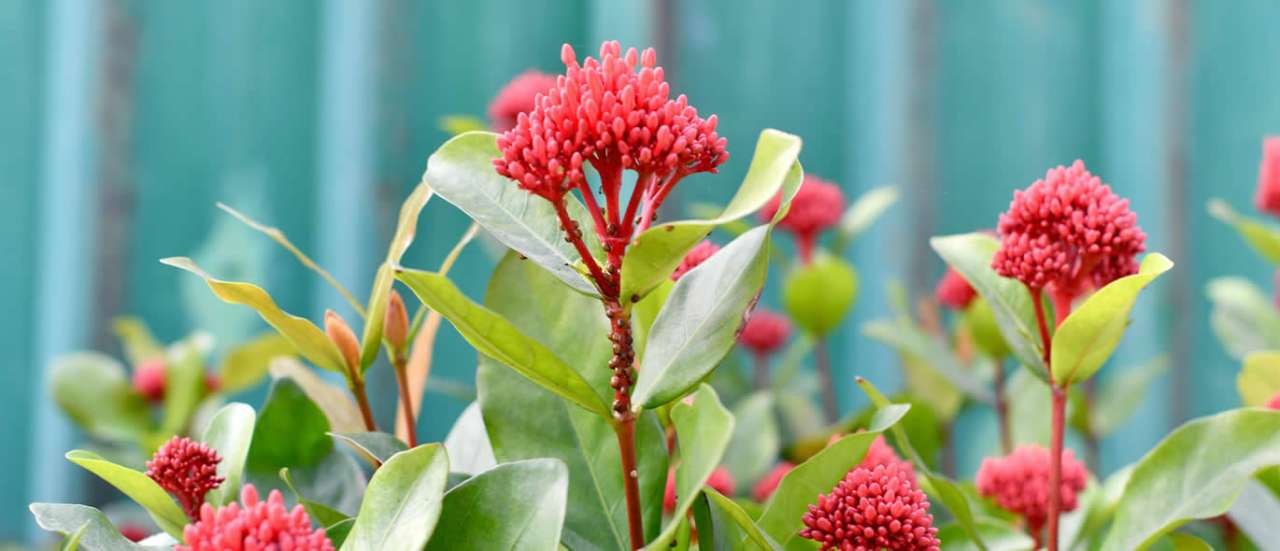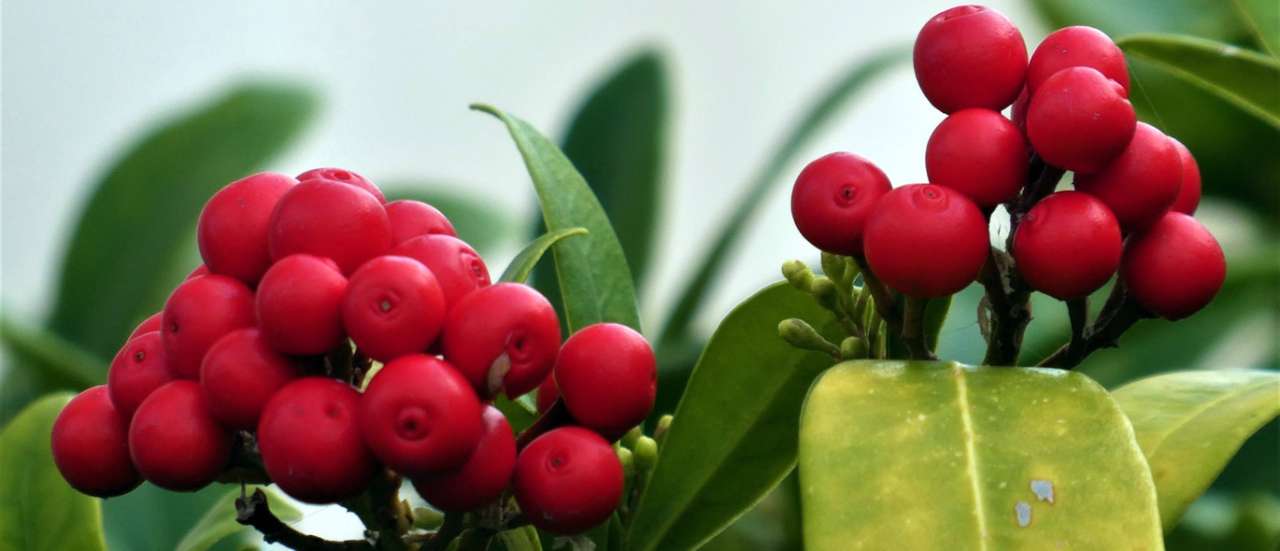We mostly see skimmia being presented in garden centres through autumn and winter, largely due to the fact most varieties have long lasting red berries that we've come to associate with the festive season. However, these slow growing, low maintenance, evergreen shrubs, with their leathery foliage, are perfect for adding structure to a shaded border or for adding to container displays. Along with the evergreen foliage, the clusters of fragrant white flowers that emerge from pink, red or pale green buds in spring and another level of interest early in the season.
It is important to note that it is only the female skimmia that produce berries and they will need a male plant nearby to insure future berry production. There are exceptions such as Skimmia Reevesiana which is both male and female and as such is self-fertile.
 Skimmia Japonica - Image by Chen Te (CC0)
Skimmia Japonica - Image by Chen Te (CC0)
Where and How to grow:
There is a general misconception with Skimmia that they must be grown in acidic soil or ericaceous compost. They will in fact grow in any type of soil as long as it is rich in organic matter and able to retain some moisture whilst also having reasonable drainage. It was believed that yellowing of the leaves with skimmia was due to a lack of iron or excessive alkalinity when in fact it has since been found that this is due to excessive dryness. Similarly, they do not like to be in in soil that gets waterlogged so it really is the moisture levels that are more important than the ph of a soil. It is therefore important when planting skimmia in the garden that you take steps to prepare the ground prior to planting by digging in plenty of organic matter or well-rotted manure.
In terms of timing, skimmia are not too fussy as to when they are planted as long as the ground isn't too wet or frozen.
As for where to plant them, these plants prefer partial to deeper shade. Sunny positions will just cause these plants to dry out too quickly and we're back to that problem of yellowing leaves. Alternatively you can plant them in containers using a good multipurpose compost with some loam added which will help with the moisture levels.
Either way, only plant skimmia as deep as they are in the pots and if you're growing on in another container, only use a pot that is 2-5cm larger in diameter to the one it is currently in. This should allow for another 2-3 years growth before the need for potting on again.
Once planted, firm in and water well.
Skimmia care:
The main thing you need to keep an eye on with skimmia is the moisture levels, making sure they are watered enough during any dry spells until they are fully established. Container grown plants will need more water during the summer months.
Most plants won't need feeding once established outside but if your ground is particularly poor you can give a spring feed of a general fertiliser or some 'blood, fish and bone'. An annual mulch of organic matter/well rotted manure is also beneficial but be sure to leave a circle free of mulch around the base of the plant to avoid any rot.
Propagation:
Skimmias can be propagated from softwood or semi-ripe cuttings taken from summer to mid-autumn or you can try hardwood cuttings from late autumn to late winter. Cut a non flowering stem, about 20-30cm long and strip all but the top two leaves. The bottom of the cutting should then be cut just below a leaf node (as this will form the root), dipped in a cutting hormone powder and then planted in pot of free draining compost (you can plant 3-5 cuttings in a pot) with about 2/3 of the cutting in the soil. If the top leaves are particularly large you may want to cut half of the leaf away to prevent too much water evaporation from the leaves.
 Skimmia Pabella (Female) - Image by Elsemargriet from Pixabay (CC0)
Skimmia Pabella (Female) - Image by Elsemargriet from Pixabay (CC0)
Skimmia Companions
If you are growing skimmia in an acidic soil, then they are perfect companions for other acid loving plants like rhododendrons, azaleas, camellias and pieris
As mentioned earlier though it isn't necessary to grow skimmias in acidic soil as long as it is rich and moist. If you don't have acidic soil, skimmias look well surrounded by low-growing heucheras of all colours that will only make these solid, glossy green plants stand out more
Red stemmed cornus (dogwood) make great companions, especially where female, red-berried varieties of skimmia are planted as the stems of the dogwood the berries of the skimmia will accentuate each other.
Low growing heathers also look well planted around skimmia and provide contrasting colours, texture and foliage
Check out our range of skimmia online or drop into one of our stores in Boyle or Roscommon Town.








